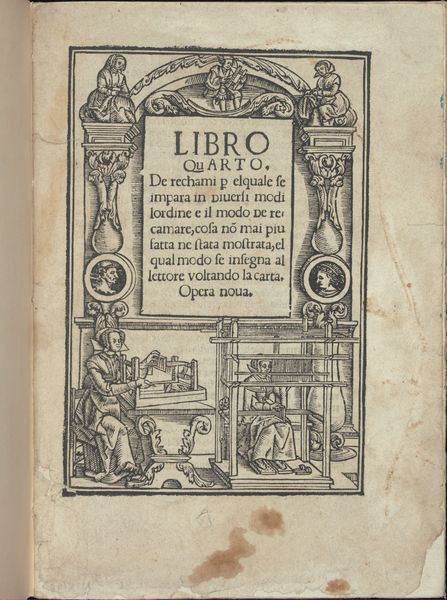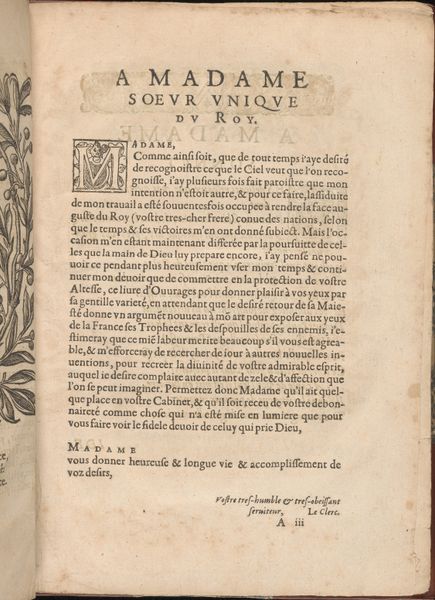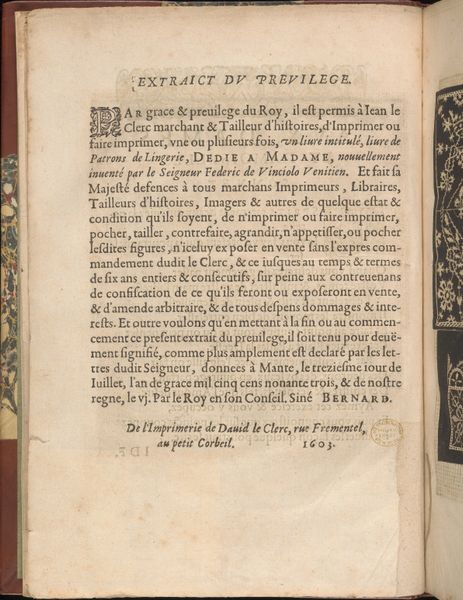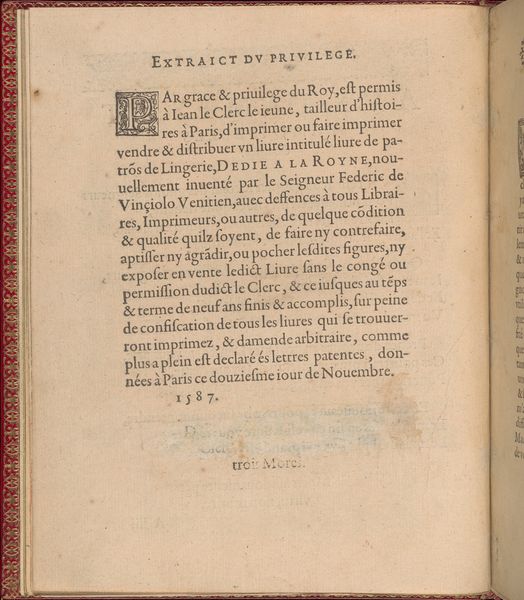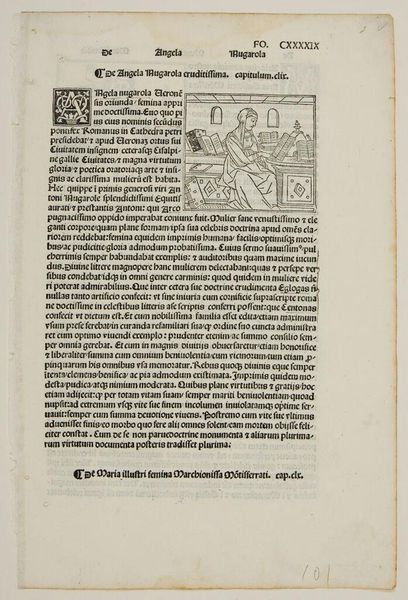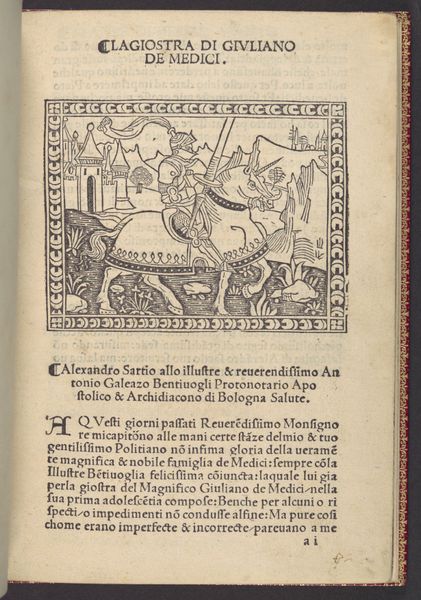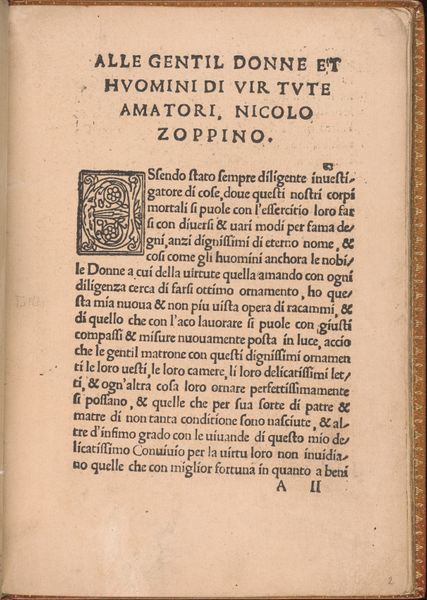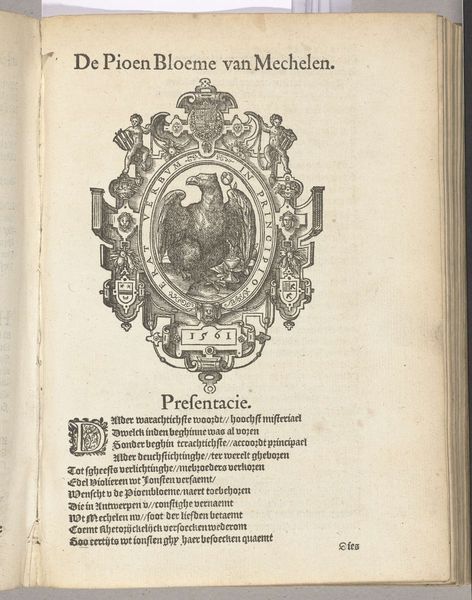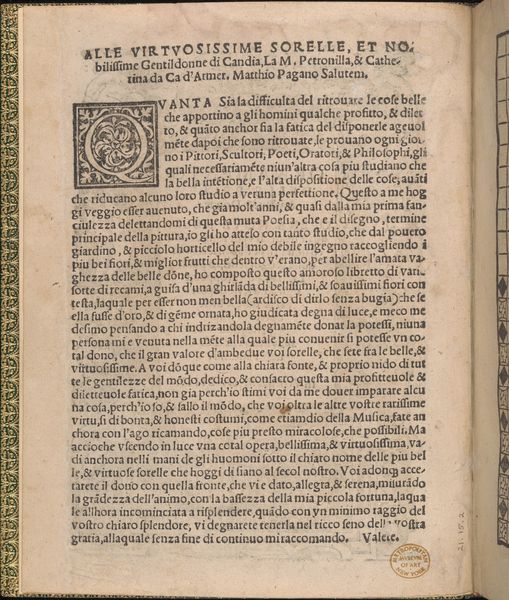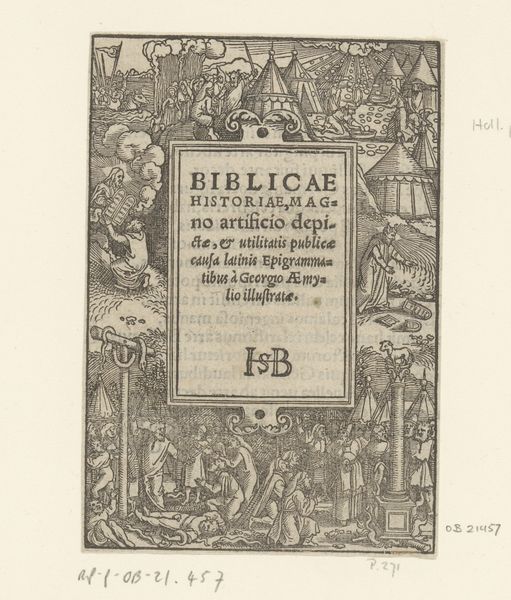
drawing, print, woodcut
#
drawing
#
narrative-art
# print
#
book
#
sketch book
#
figuration
#
woodcut
#
italian-renaissance
Dimensions: Overall: 7 7/8 x 5 1/2 in. (20 x 14 cm)
Copyright: Public Domain
Curator: Here we have a page from “Convivio delle Belle Donne,” or "Banquet of Beautiful Women", dating back to 1532. It’s a woodcut, one of many pages from a book published in Venice by Nicolò Zoppino. Quite lovely, isn’t it? Editor: It's quite…stern, isn’t it? Almost austere. The heavy lines of the woodcut create a stark contrast on the page. The composition feels very formal, with that central image looking very... hieratic. There's an immediate sense of seriousness that really seizes you. Curator: "Hieratic" is a great word for it! The seated figure definitely holds a commanding presence. Notice the details in his robes and the pastoral staff; there is a real weight in those forms, beautifully rendered by the artist's skillful use of line. You feel you should bow before this powerful image. Editor: Absolutely, that contrast works wonders and almost evokes a sense of…submission, maybe even desperation from the other figure there. How does this narrative, this "Banquet of Beautiful Women," play into the historical and societal views of women at that time? Were these banquets actually inclusive and celebratory, or were they constrained by rigid patriarchal norms? Curator: Ah, context! Yes, this book, in its printed form, was likely consumed in intimate domestic settings by these very women. But it also circulated among literate men. As such, "Convivio" acts as an active reflection on the gendered discourse of conduct in the 16th century, at once reflecting and reinforcing prevailing views. Editor: Precisely. So even within the pretense of female festivity, what power structures and expectations were being subtly or not so subtly reinforced through works like this? How much agency were these women really afforded within these so-called convivial spaces? It is definitely thought-provoking! Curator: Yes, what's so interesting is the way such scenes were rendered with enough ambiguity to permit multiple readings. A kind of dance of suggestion and circumscription! In the woodcut, who is powerful and who is powerless depends entirely on one's cultural and aesthetic perspectives. That, for me, is what great art achieves! Editor: It reminds us how artworks from the past are not just aesthetic objects, but tangible reflections of the societal power dynamics and ongoing conversations. They carry historical echoes that need to be deciphered. It encourages us to keep the conversations going.
Comments
No comments
Be the first to comment and join the conversation on the ultimate creative platform.

